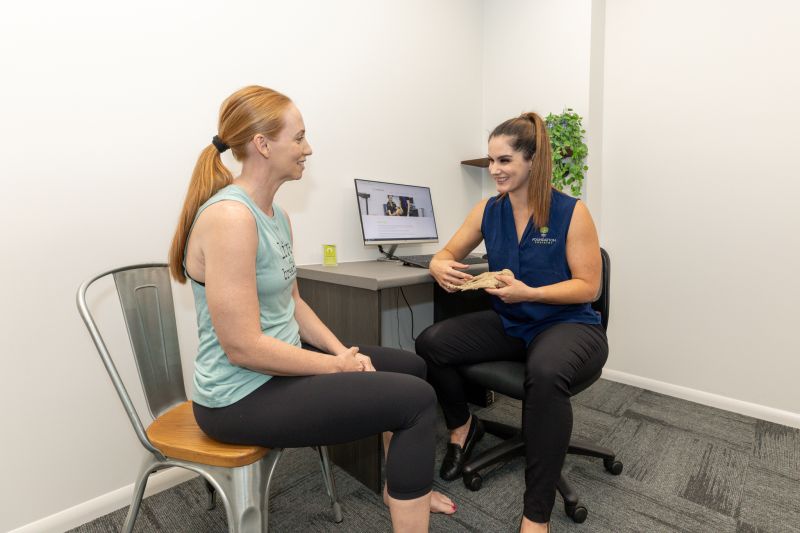More pages in this section
Foot and Ankle Pain Management- Sports Podiatrist
Anybody who has had a sporting injury knows how devastating they can be. Sporting injuries can be placed into 3 categories:
1. Acute injury/trauma
2. Overuse injury without a one-time injury/trauma
3. An old injury from many seasons ago that just does not seem to get better
Some conditions that present in the more sedentary population can also affect the sporting population, however the mechanism of injury and method of treatment may be quite different. An example is Plantar Fasciitis in a middle-aged person is likely a chronic, degenerative condition whereas Plantar Fasciitis in a sportsperson may be an acute strain or tear of the plantar fascia. In which case the same ‘condition’ needs to be managed very differently.
Often sportspeople will not consider seeing a Podiatrist for their acute lower limb injury. They may see their Doctor or Physio instead. Our experienced Podiatrists are trained in treating acute and chronic sporting injuries and can refer for medical imaging when necessary.
Our general approach at Foundation Podiatry for treating sporting injures:
Offload/unload the injury – to allow it to start healing. This may include strapping, padding, appropriate footwear, custom foot orthoses or moon boot fittings. Activity modification will be discussed.
Assist with tissue healing – the body is generally good at fixing itself, however there are many treatment options to speed up this process, such as medical acupuncture, medical laser therapy and shockwave therapy.
Rehabilitation – balance, mobility, strengthening and plyometric exercises need to be introduced at the right time to get you back to the point where you are ready to participate in your sport again.
Performance enhancement – often sporting injuries occur (particularly overuse injuries) when a person has undesirable lower limb biomechanics. For example, stiff high arch feet may increase the risk of developing sesamoiditis in a dancer, poor central stability/ ipsilateral hip drop may increase risk of developing lateral hip pain in a runner and poor ankle dorsiflexion may increase the risk of developing shins splints (MTSS) in a soccer player.
Sporting injuries treated at Foundation Podiatry:
Forefoot Injuries
Sesamoiditis – 2 tiny bones under the big toe joint which can become inflamed or suffer a stress fracture or acute fracture
Turf toe – painful, swollen big toe joint following a plantarflexion injury (hyperextension of big toe joint)
Plantar plate injury – often when landing heavily on the forefoot the plantar plate which is a ligament supporting the metatarsal arch can become disrupted or torn
Metatarsal stress fracture – commonly affecting the 2nd metatarsal when bone stress is greater than bone repair
Midfoot Injuries
Lisfranc injury – often occurs in sports like soccer or football where a player may stand on another player’s foot, or from landing from a height. The midfoot is separated from the forefoot causing ligament tear, cartilage damage and/or bone fracture
Cuboid syndrome – the cuboid bone on the outside of the forefoot may become subluxed.
Heel injuries
Plantar Fasciitis – heel pain presenting in an acute form (fasciitis) or chronic, degenerative form (fasciosis)
Achilles tendon injury – the injury occurs at either the insertion or midportion of the tendon and is either acute/inflammatory (tendonitis) or chronic/degenerative (tendinosis)
Fat pad syndrome - the cushioning pad of the heel can become bruised from high impact or overuse
Ankle Injuries
Ankle sprains – inversion or eversion sprain + syndesmosis injuries
Ankle impingement – either anteriorly or posteriorly the ankle joint movement may become reduced and painful, often from a bony block
Leg Injuries
Medial tibial stress syndrome – is the most common form of shin pain and is located along the inside lower 1/3 border of the tibia
Chronic Exertional Compartment Syndrome – is another form of leg pain affecting the muscle compartments of the lower leg where the muscle expands due to exercise but the fascial compartment is too tight and causes compression
Calf / hamstring strain, knee, hip and low back injuries and many more!
[feature-block]
Do you have a sports injury or are you wanting to enhance your performance? Our experienced Biomechanical Podiatrist Hayley has a sporting background herself and 19 years experience in dealing with sports injuries. Hayley can take you from initial injury to be optimally functioning back on the sporting field.
[/feature-block]









